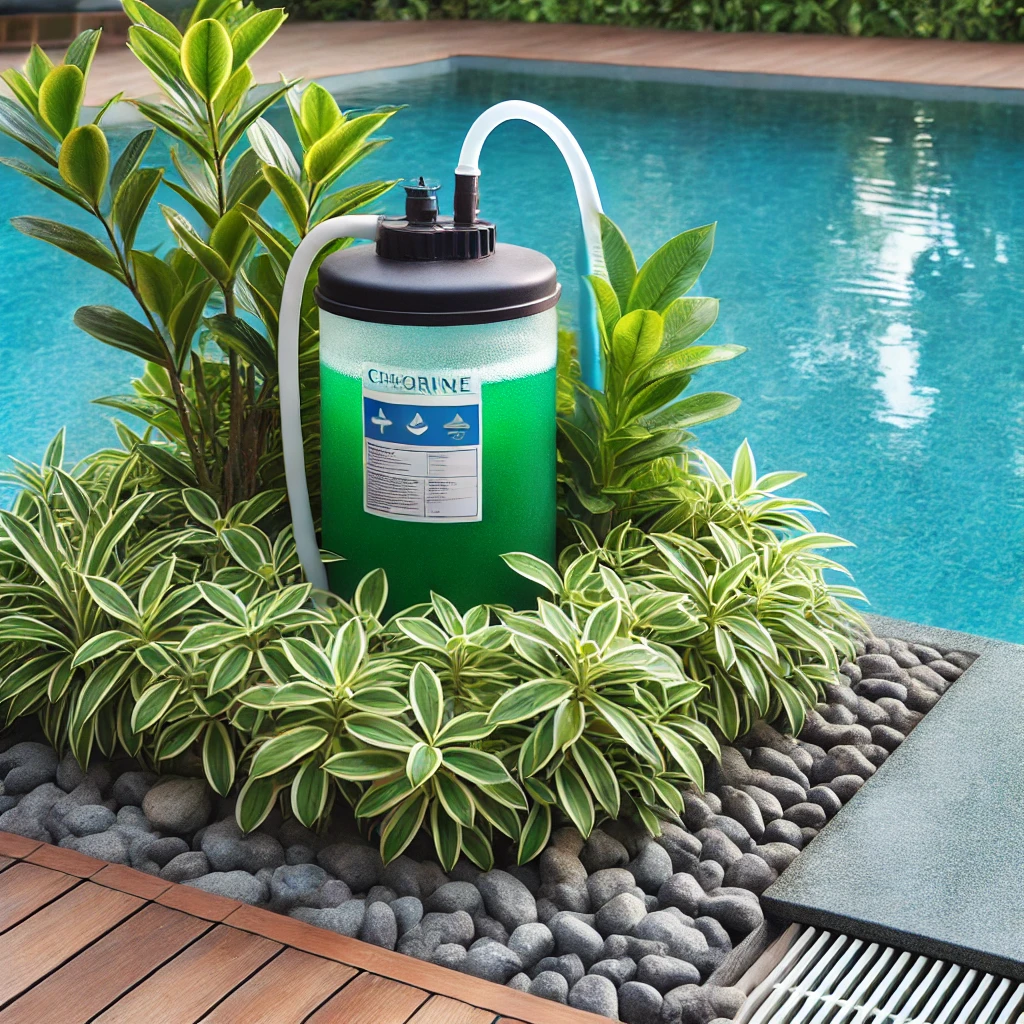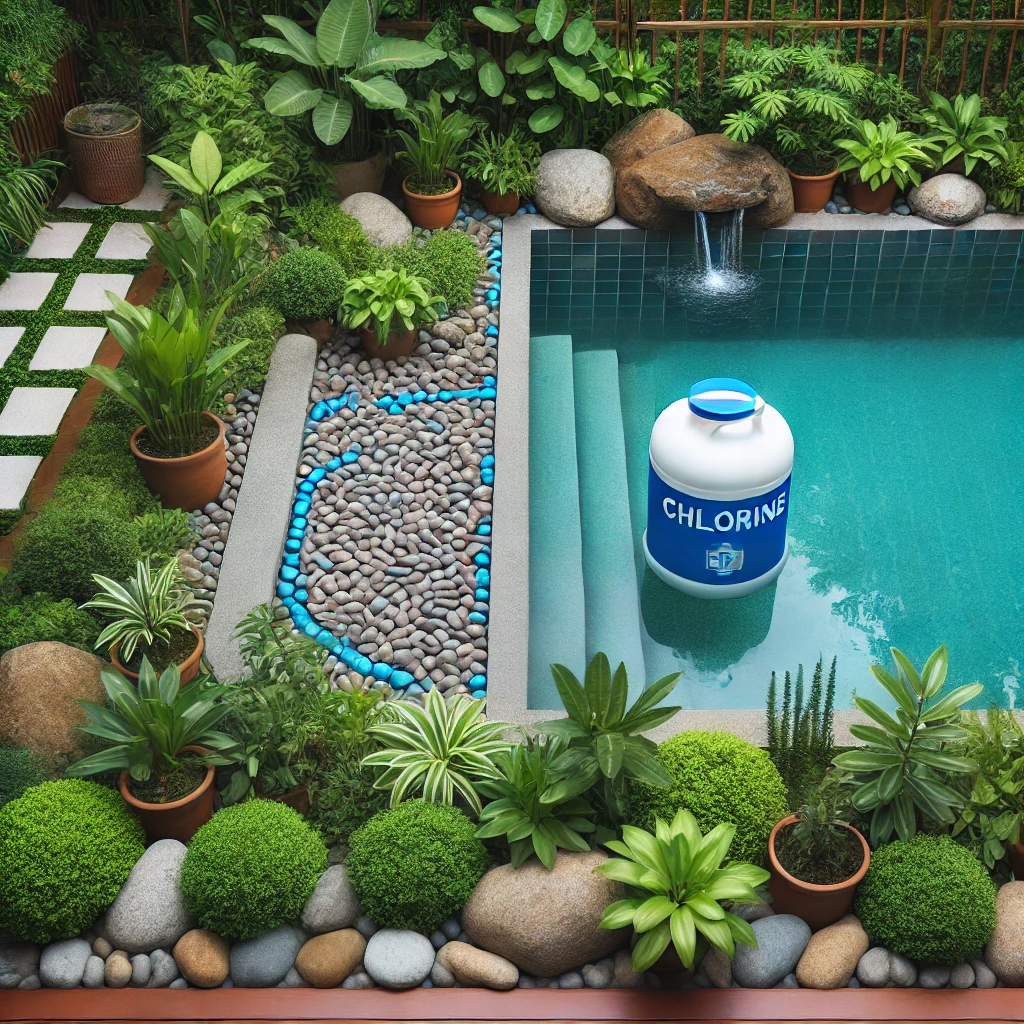Maintaining a clean and safe swimming pool often requires the use of pool chlorine tablets. These tablets are essential for disinfecting pool water and keeping it free from harmful microorganisms. However, while chlorine for pools is crucial for water quality, it can pose a risk to the surrounding plants. In this article, we will explore how to protect your poolside plants while effectively using pool chlorine tablets.

I. Understanding the Impact of Chlorine on Plants
1. How Chlorine Affects Plants
Chlorine for pools is a strong chemical that can be harmful to plants. When chlorine comes into contact with leaves, roots, or soil, it can cause damage. This damage often appears as leaf burn, yellowing, or stunted growth. Over time, excessive exposure to chlorine can even kill plants.
2. Chlorine Exposure Pathways
Plants near the pool can be exposed to chlorine in several ways. Splashing from the pool, water runoff, and even wind can carry chlorine to nearby plants. Additionally, overuse of pool chlorine tablets can increase the risk of chlorine leaching into the soil, affecting plant roots.
3. The Importance of Protecting Plants
Protecting your poolside plants is important for maintaining a beautiful and healthy landscape. Plants provide shade, privacy, and aesthetic appeal to your pool area. By taking steps to minimize chlorine exposure, you can ensure that your plants thrive alongside your pool.
II. Strategies to Protect Plants from Chlorine
1. Use a Chlorine Dispenser
One effective way to reduce chlorine exposure to plants is by using a chlorine dispenser. A dispenser or floater releases pool chlorine tablets slowly and evenly, preventing concentrated chlorine from splashing out of the pool. This helps minimize the amount of chlorine that can come into contact with nearby plants.
2. Create a Buffer Zone
Establishing a buffer zone between the pool and plants can reduce chlorine exposure. Leave a few feet of space between the pool’s edge and your plants. This buffer zone acts as a barrier, preventing splash water from reaching the plants. Additionally, placing rocks, gravel, or mulch in the buffer zone can help absorb chlorine before it reaches the soil.
3. Water Plants Regularly
Regularly watering your poolside plants can dilute any chlorine that may have splashed onto them. Watering helps wash chlorine off the leaves and reduces its concentration in the soil. This practice is particularly important during hot weather when chlorine evaporation and splashing are more likely.
4. Apply a Protective Spray
Applying a protective spray to your plants can create a barrier against chlorine. There are commercial sprays available that coat the leaves and protect them from chemical damage. Alternatively, you can use a diluted solution of water and liquid soap to create a temporary protective layer. Reapply the spray regularly, especially after heavy pool use.
III. Best Practices for Pool Maintenance to Protect Plants
1. Monitor Chlorine Levels
Regularly monitoring chlorine levels is essential for maintaining a balance between pool cleanliness and plant health. Use a pool testing kit to ensure that chlorine levels stay within the recommended range. Avoid over-chlorinating the pool, as excessive chlorine increases the risk of plant damage.
2. Avoid Overfilling the Pool
Overfilling the pool can lead to more water splashing out, increasing the risk of chlorine exposure to plants. Keep the water level slightly below the pool’s edge to reduce splashing. This simple adjustment can make a significant difference in protecting your plants.
3. Use Pool Covers
When the pool is not in use, consider using a pool cover. Pool covers prevent evaporation and reduce the amount of chlorine that escapes into the air. They also minimize the risk of splash water reaching nearby plants. By using a cover, you can protect both your pool water quality and your plants.
4. Rinse Plants After Pool Use
After a day of heavy pool use, take a moment to rinse your plants with fresh water. This practice helps wash away any chlorine that may have splashed onto the leaves or soil. Rinsing is especially important for sensitive plants that are more susceptible to chlorine damage.
IV. Long-Term Solutions for Protecting Plants
1. Choose Chlorine-Tolerant Plants
Consider planting chlorine-tolerant species near your pool. Some plants are naturally more resistant to chlorine and can thrive even with occasional exposure. Examples include certain types of grasses, succulents, and hardy shrubs. Research and select plants that are known to withstand chlorine better than others.
2. Improve Soil Drainage
Improving soil drainage can help protect plant roots from chlorine exposure. Well-drained soil prevents chlorine from accumulating around the roots. You can improve drainage by adding organic matter, such as compost or mulch, to the soil. Additionally, consider elevating the planting beds to further enhance drainage.
3. Use Barriers or Screens
Installing barriers or screens between the pool and your plants can provide an additional layer of protection. Fences, trellises, or hedges can block wind and prevent chlorine-laden water from reaching your plants. These barriers can also enhance the aesthetic appeal of your pool area while providing privacy.

V. Conclusion
Using pool chlorine tablets is essential for maintaining a clean and safe swimming pool. However, it’s equally important to protect the plants that surround your pool. By implementing strategies such as using a chlorine dispenser, creating buffer zones, and regularly watering your plants, you can minimize chlorine exposure and keep your plants healthy. With proper care and attention, you can enjoy a beautiful poolside landscape that complements your well-maintained pool. Balancing the needs of both your pool and your plants ensures a harmonious and inviting outdoor space for everyone to enjoy.




